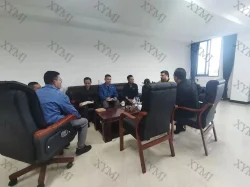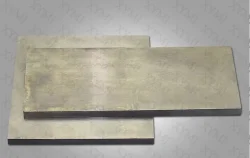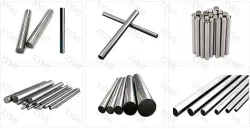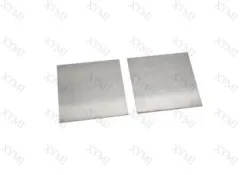2021-03-04
Tungsten carbide has high hardness and wear-resistance, The cutting speed of carbide tools is 4 to 7 times higher than that of high-speed steel with 5 to 80 times the higher service life. Carbide products can cut hard materials of about 50HRC. The articles will introduce some important & professional knowledge about the cemented carbide.
Material properties of tungsten carbide
Cemented carbide is mainly micron-sized powders of carbides (WC, TiC) of high-hardness refractory metals. The main components are powder metallurgical products sintered in a vacuum furnace or a hydrogen reduction furnace with cobalt (Co), nickel (Ni), and molybdenum (Mo) as the binder.
The matrix of cemented carbide is composed of two parts: one part is the hardening phase and the other part is the bonding metal.
The hardened phase is the carbide such as tungsten carbide, titanium carbide, and tantalum carbide. Their hardness is very high, and their melting points are above 2000°C, and some even exceed 4000°C. The existence of the hardening phase determines the carbide has extremely high hardness and wear resistance.
Tungsten carbide WC grain size requirements for cemented carbide use different grain size WC according to different applications.
Carbide cutting tools
Carbide cutter is widely used for metal cutting and machining. Fine machining alloys such as foot cutter blades and V-CUT knives use ultra-fine, sub-fine, and fine-grained WC; rough-machining alloys use medium-grain WC; gravity cutting and heavy-duty cutting alloys use medium and coarse Granular WC as raw material.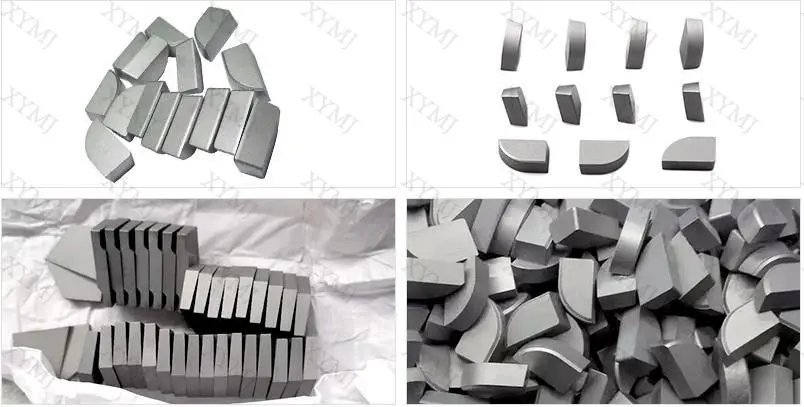
Carbide mining tools
The rock has high hardness and a large impact load. Coarse WC is adopted, and the rock impact is small with a small load. Medium-sized WC is used as raw material.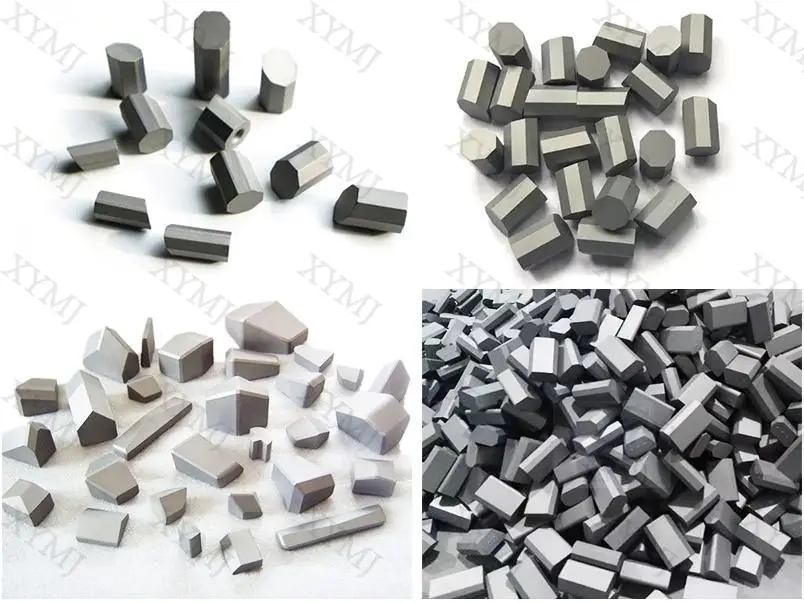
Carbide wear-resistant parts
When emphasizing its wear resistance, compression resistance and surface finish, adopt ultra-fine, sub-fine, fine, and medium-grain WC as raw material and use medium and coarse-grain WC raw materials as the main material for impact-resistant carbide wear parts.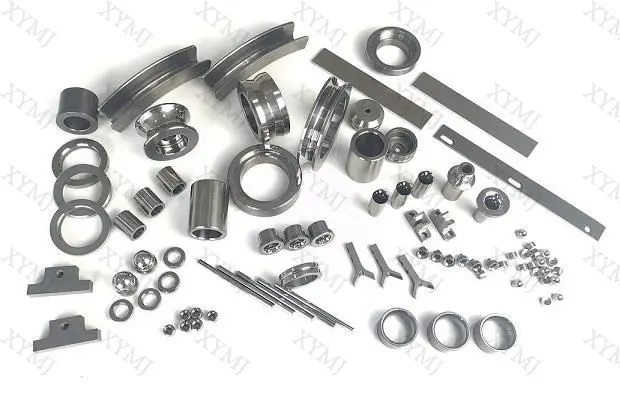
The theoretical carbon content of WC is 6.128% (atomic 50%). When the carbon content of WC is greater than the theoretical carbon content, free carbon (WC+C) appears in the WC. The presence of free carbon causes the surrounding WC grains to grow during sintering, resulting in uneven grains of cemented carbide. Tungsten carbide generally requires high combined carbon (≥6.07%), free carbon (≤0.05%), and total carbon is determined by the production process and scope of application of cemented carbide.
The bonding metal is generally iron group metals and cobalt and nickel are commonly used.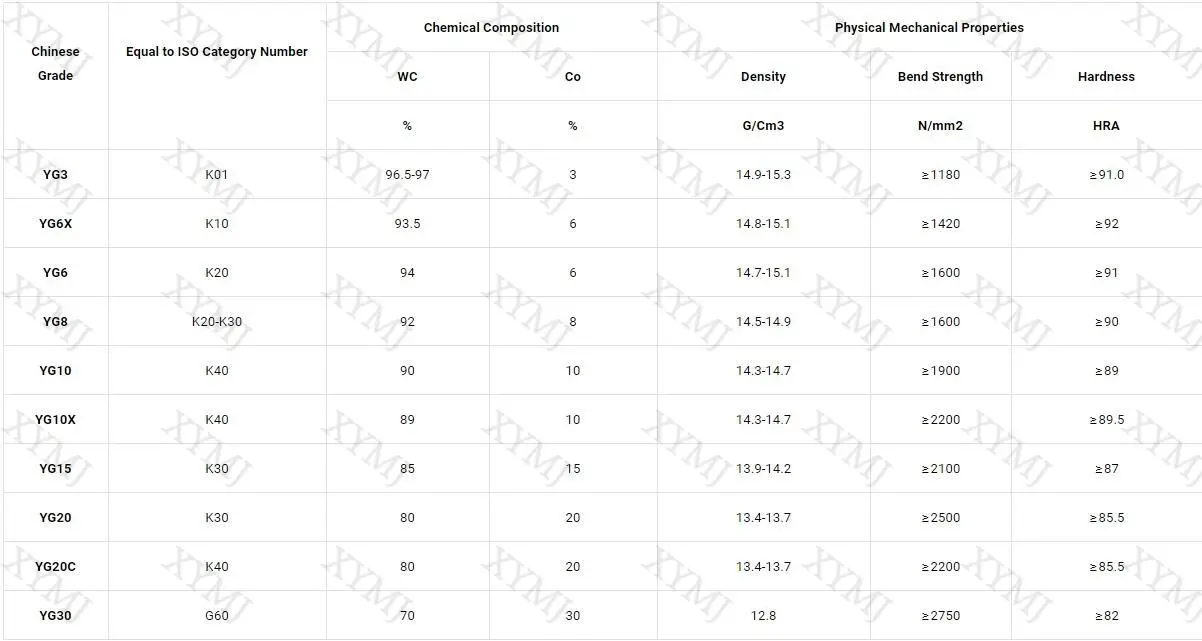
Characteristics of tungsten carbide
1. High hardness and wear resistance. Generally, between HRA86 ~ 93, decreases with an increase in cobalt.
2. Thermohardening. Under the temperature of 500°C is basically unchanged and there is still a high hardness at 1000°C.
3. High anti-bending strength. The bending strength at normal temperature is between 90 and 150 MPa and the higher the cobalt, the higher the anti-bending strength.
4. More stable chemical properties. Carbide material has acid-resistance, alkali-resistant, and even significantly oxidation even at high temperatures.
5. High thermal conductivity. Cemented carbide has higher thermal conductivity than that of high-speed steel, which increases with the increase of cobalt.
6. The coefficient of thermal expansion is relatively small. It is lower than high-speed steel, carbon steel and copper, and increases with the increase in cobalt.
The manufacturing method of tungsten carbide
The production of the cemented carbide is to mix tungsten carbide and cobalt in a certain proportion, pressurize into various shapes, and then semi-sintered. The sintering temperature is 1300-1500°C.
When manufacturing cemented carbide, the selected raw material powder has a particle size between 1 and 2 microns, and the purity is very high. The raw materials are mixed according to the specified composition ratio, and the medium is added into the wet ball mill to wet-grind them for making them fully mixed and crushed. After drying and sieving, the forming agent is added, and then the mixture is dried and sieved. Then, when the mixture is granulated and pressed, and heated to close to the melting point of the binder metal (1300-1500°C), the hardened phase and the binder metal will form a eutectic alloy. After cooling, a solid whole is formed. The hardness of cemented carbide depends on the hardened phase content and grain size, that is, the higher the hardened phase content and the finer the grains, the greater the hardness. The toughness of cemented carbide is determined by the bond metal. The higher the content of the bond metal, the greater the bending strength.
Hardness test of tungsten carbide
The cemented carbide is a metal, which can reflect the difference in mechanical properties in chemical components, tissue structures, and heat-treatment process. Therefore, the hardness test is widely used in the inspection of carbide properties, which can supervise the correctness of the heat treatment process and the research of new materials. The hardness detection of tungsten carbide mainly uses a Rockwalk hardness tester to test HRA hardness values. The test has a strong shape and dimensional adaptability of the test piece with high efficiency.
Summary
With high hardness, excellent wear resistance & corrosion resistance, tungsten carbide has a high performance in the high-tech manufacturing field which has a strict requirement of quality, stability and reliability.
Why Tungsten Carbide Is Widely Used As Tool Material
Visit from UK Partners: A Week of Collaboration and Innovation
